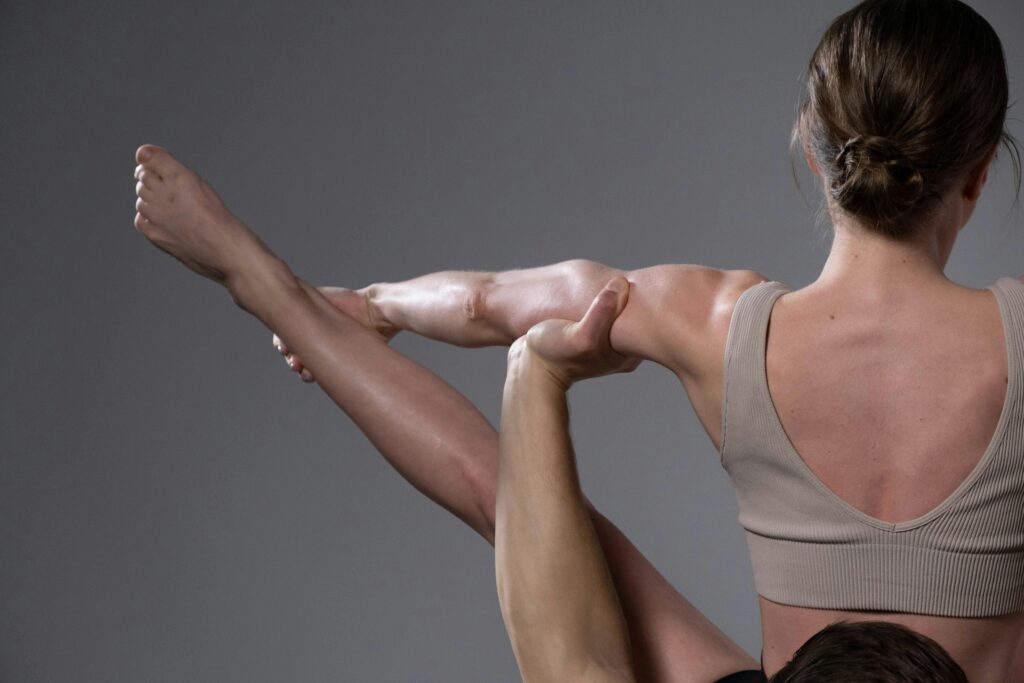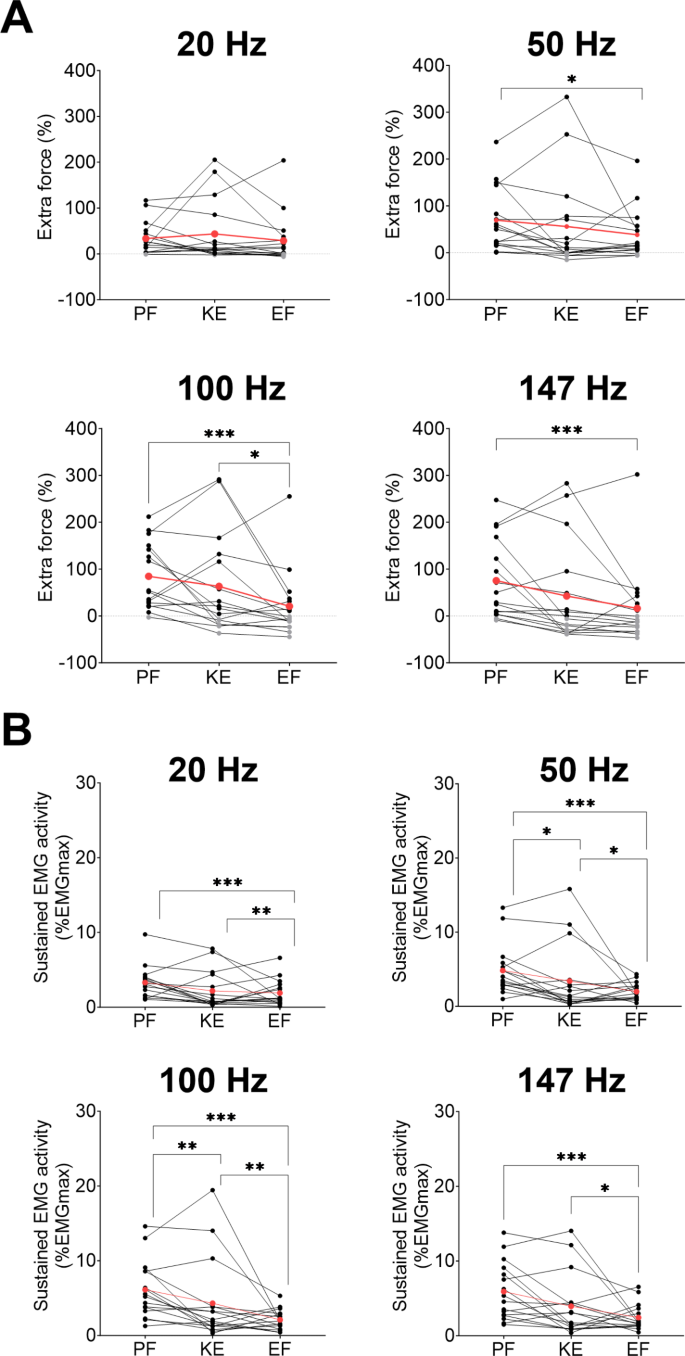In a groundbreaking study, researchers have uncovered the intricate relationship between neuromuscular electrical stimulation (NMES) and the activation of different muscle groups. By examining the responses of the plantar flexors, knee extensors, and elbow flexors, the team has shed light on how the central nervous system mediates muscle contractions induced by NMES.

The study, led by scientists from the University of Lausanne and the Schulthess Clinic in Zurich, Switzerland, reveals that the plantar flexor muscles (responsible for ankle movements) exhibit significantly stronger centrally-mediated responses to NMES compared to the elbow flexors. This finding suggests that the lower limb muscles, particularly the plantar flexors, are more responsive to NMES-induced reflexive recruitment of motor units.
The researchers attribute these differences to variations in peripheral nerve architecture, muscle fiber composition, and the functional roles of the muscles. For instance, the plantar flexors have a higher proportion of slow-twitch, fatigue-resistant muscle fibers and a denser network of sensory nerve endings, which may contribute to their enhanced responsiveness to NMES. In contrast, the elbow flexors, with a greater proportion of fast-twitch fibers, appear to be less sensitive to the central nervous system’s influence during NMES.
Understanding these muscle-specific responses to NMES is crucial for optimizing rehabilitation and training strategies, as well as for developing more effective neuromuscular electrical stimulation protocols. The insights gained from this study could pave the way for personalized NMES interventions, tailored to the unique characteristics of each muscle group and individual.
Muscle, Neuromuscular electrical stimulation, Motor unit, Plantar flexion, Knee extension, Elbow flexion
the Complexities of Muscle Activation
Muscles are the powerhouses of our bodies, responsible for generating the forces that enable us to move, maintain posture, and perform a wide range of physical activities. However, the mechanisms underlying muscle activation and the interplay between the nervous system and different muscle groups are not fully understood. This is where the groundbreaking research conducted by a team of scientists from the University of Lausanne and the Schulthess Clinic in Zurich, Switzerland, comes into play.
Exploring the Muscle-Specific Responses to Neuromuscular Electrical Stimulation
The researchers set out to investigate how the central nervous system mediates muscle contractions induced by neuromuscular electrical stimulation (NMES) across different muscle groups. NMES is a widely used technique in rehabilitation and training, as it can help enhance, preserve, and restore neuromuscular function in various patient populations.
The study focused on comparing the responses of three key muscle groups: the plantar flexors (responsible for ankle movements), the knee extensors, and the elbow flexors. The researchers hypothesized that the plantar flexors would exhibit stronger centrally-mediated responses to NMES, as evidenced by higher “extra force” (a measure of the additional force generated through reflexive motor unit recruitment) and sustained electromyographic (EMG) activity.

Unraveling the Mechanisms Behind Muscle-Specific Responses
The findings of the study were quite revealing. The researchers found that the plantar flexors, indeed, showed significantly higher extra force and sustained EMG activity compared to the elbow flexors, especially when using wider pulse durations (1-2 milliseconds) and higher stimulation frequencies (100-147 Hz).
The researchers attribute these differences to several factors:
1. Peripheral Nerve Architecture: The density and depth of the nerve endings within the muscle tissue can influence the ability of NMES to activate sensory fibers and, consequently, the central nervous system’s contribution to the muscle contraction.
2. Muscle Fiber Composition: The plantar flexors, particularly the soleus muscle, have a higher proportion of slow-twitch, fatigue-resistant muscle fibers, which are more sensitive to the central nervous system’s influence. In contrast, the elbow flexors have a greater percentage of fast-twitch fibers, which may be less responsive to NMES-induced reflexive recruitment.
3. Muscle Function: The plantar flexors and knee extensors are involved in postural control and movement, which rely more on the central nervous system’s regulation. The elbow flexors, on the other hand, are primarily responsible for upper limb movements, which may be less dependent on centrally-mediated mechanisms.

Fig. 2
Implications for Rehabilitation and Training
The findings of this study have significant implications for the optimization of NMES-based rehabilitation and training protocols. By understanding the muscle-specific responses to NMES, healthcare professionals and exercise scientists can tailor their interventions to better target the desired muscle groups and enhance the effectiveness of the treatment or training program.
For instance, the researchers suggest that the use of wide-pulse, high-frequency NMES may be more pertinent for lower limb muscles, particularly the plantar flexors, as they exhibit a greater capacity for centrally-mediated force production. This knowledge can inform the development of personalized NMES protocols, ensuring that each muscle group is stimulated in a way that maximizes the desired physiological adaptations.

Fig. 3
Expanding the Frontiers of Neuromuscular Research
The study’s findings also contribute to the broader understanding of neuromuscular function and the complex interplay between the nervous system and different muscle groups. By shedding light on the muscle-specific responses to NMES, the researchers have opened up new avenues for further exploration in the field of neuromuscular research.
Future studies may delve deeper into the underlying mechanisms, such as the role of persistent inward currents and the influence of muscle spindle density, in shaping the observed differences in centrally-mediated responses. Additionally, investigations into the potential impact of NMES on the corticospinal excitability of different muscle groups could provide valuable insights into the neural adaptations induced by this intervention.

Fig. 4
Unlocking the Potential of Personalized NMES Interventions
The findings of this study represent a significant step forward in our understanding of how the central nervous system interacts with different muscle groups during NMES. By recognizing the unique characteristics and responsiveness of each muscle group, healthcare professionals and exercise scientists can now work towards developing more targeted and effective NMES-based interventions, ultimately improving the outcomes for individuals undergoing rehabilitation or seeking to enhance their athletic performance.
As the field of neuromuscular research continues to evolve, studies like this one will undoubtedly play a crucial role in unlocking the full potential of NMES and other neuromuscular stimulation techniques, paving the way for personalized, evidence-based approaches to muscle activation and rehabilitation.
Author credit: This article is based on research by Timothée Popesco, Quentin Gardet, Jonathan Bossard, Nicola A. Maffiuletti, Nicolas Place.
For More Related Articles Click Here
